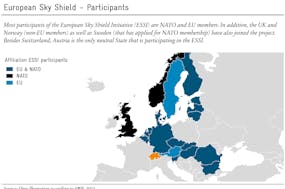What is the scope of the government’s activity in Switzerland ? The answer to this question depends on where the limit between the private and the public sector lies. The following is a brief overview for a better comprehension :
1. The “true” public ratio spending : 110 billion Swiss francs, 17% of the GDP
Public services provided by the Confederation, cantons, and municipalities—such as education, safety, defense, transportation, etc.—clearly belong to the public sector ; this is why they are qualified as “true.” Unlike private sector services, there is often no market price for the government services. As a result, these services are mostly assessed based on the costs generated for setting them up. These costs include operating and investment expenditures, as well as the salaries of government employees. Specific additional services that are produced by the private sector and consumed by households (for example, subsidized space in private daycare centers, hospital benefits, etc.), are nonetheless paid for by the government.

17, 33, or 44%? (Wikimedia Commons)
2. Government redistribution rate : 101 billion Swiss francs, 16% of the GDP
The government does not only supply services—it also redistributes money as subsidies for companies or as financial transfers for households. Unlike government benefits, these transfers do not create added value from a national accounting perspective, but are rather a redistribution of pre-existing added value. Therefore, they do not have a direct influence on the gross domestic product (GDP) level, which measures the sum of the domestic value created. Notwithstanding, transfers and subsidies are an important part of the government’s expenditure : in 2014 they reached approximately 110 billion Swiss francs, of which 41 billion alone were used for the payment of the OASI (Old Age and Survivors Insurance).
3. Formal public spending ratio : 221 billion Swiss francs, 33% of the GDP
The formally accounted for public spending ratio is the sum of the “true” government-take and the redistribution rate in relation to the GDP. Given that the redistribution rate is also taken into consideration, it would theoretically be possible for the government-take to be above 100% of the GDP. With a 56% ratio, France currently holds the record at the OECD, even though the definition of public spending ratio is not immediately comparable between countries (see points 4 and 5).
4. Expanded public spending ratio : 278 billion Swiss francs, 44% of the GDP
The decentralized supply of certain services, partly due to social insurances, is a Swiss particularity. Mandatory health insurance, managed by private insurance companies, is a good example, as are occupational pensions. This is why, in the national accounts, contributions to mandatory health insurance and to the second pension pillar are not considered State expenditure. If all compulsory levies and mandatory insurances were allocated to the State in Switzerland, the public spending ratio would increase from 33% to around 44%. Switzerland would then classify somewhere in the middle of the European countries’ government footprint ranking.
5. Contingent liabilities and regulations : amount unknown
Explicit and implicit State guarantees should be added to actual government spending, for example, in the event of a systemically important bank’s bankruptcy. Let us also not forget regulations ; even though they cannot be directly traced in the national accounts and in the calculation of public ratio spending, they do, however, oblige households and businesses to undertake more expenditure or operate costly adjustments—for example, through excessive electricity prices in a regulated market.





